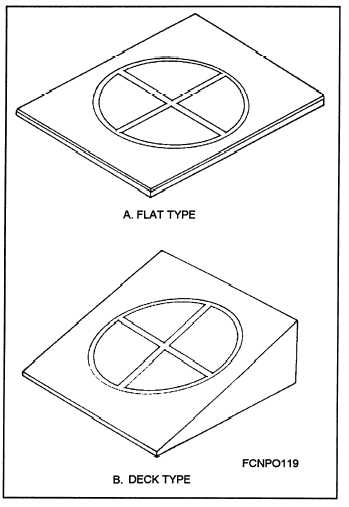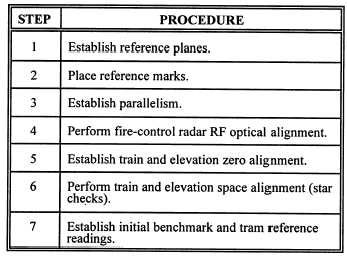Figure 3-14.—Typical benchmarks.
DIALS
Although the dials that must be read by alignment
personnel are part of the equipment being aligned and
cannot properly be considered to be equipment requir-
ing alignment, a brief review is given of the precau-
tions to be observed in reading dials.
The correct reading of dials is extremely important
in alignment work. A simple mistake. in reading a dial
can cause great difficulty or unnecessary work. Such
mistakes are often made, even by experienced person-
nel, and are made most often because of carelessness
or undue haste.
Before you attempt to read a dial, it is essential
that you familiarize yourself with the values of the
graduations and the manner in which the dials operate.
This is particularly important if the dials are not read
frequently. In such cases, several trial readings should
be taken and checked with someone else before
starting the alignment. Even familiar dials should be
read systematically and deliberately. Above all, no
attempt should be made to hurry. A few extra seconds
spent in making a careful reading may later save hours
of work involved in performing an unnecessary ad-
justment procedure.
ALIGNMENT CONSIDERATIONS
There are certain major steps in combat systems
alignment that must proceed according to a specified
sequence. Strict adherence to the order in which the
steps are conducted is essential to the successful com-
pletion of the alignment task. The sequence in which
these steps are to be performed is shown in table 3-1.
Table 3-1.—Procedures for Combat Systems Alignment
Initially, these steps are accomplished by the in-
stalling activity during ship construction. Thereafter,
shipboard alignment checks and verification consist
mainly of benchmark checks, tram checks, and star
checks.
This section briefly discusses the establishment of
reference planes, the placement of reference marks,
the establishment of parallelism, the performance of
fire-control radar radio-frequency-optical alignment,
the establishment of training and elevation zero align-
3 - 1 2




